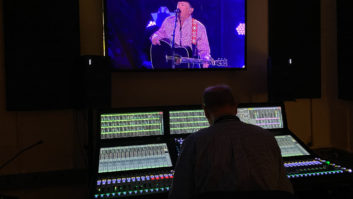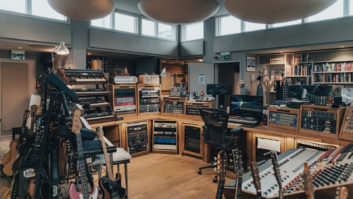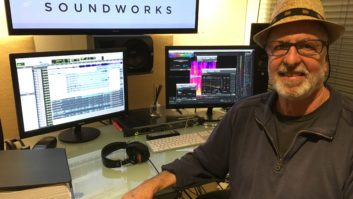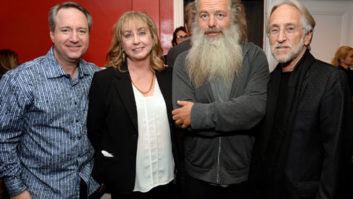
There’s a story that Keith Stegall (Alan Jackson’s longtime producer and no stranger to songwriting, performing and running record labels himself) loves to tell. “Alan didn’t get signed until 1990,” he recalls. “On New Year’s Eve 1988 or 1989, my wife and I were going to a bunch of parties. Alan was playing the Quality Truck Stop [in Nashville], and we had a table reserved there. Maybe 10 people were in this club. Two couples walked in and asked who was singing. I said, ‘Alan Jackson.’ One woman said, ‘Let’s go somewhere else.’ I said, ‘In two years, you’ll pay $20 to see him.’ They laughed and walked out.”
That was 45 million albums sold and 31 Number One singles ago. Now, they can hear him sing a unique collection of songs selected by producer Alison Krauss on his latest album, Like Red on a Rose. In many ways, it’s a departure for Jackson. Even his wife describes the album as “a cross between Don Williams and Norah Jones.” Jackson, a guy so laid back that he’s practically horizontal, seems a natural for the CD’s easy-listening mood, and as usual, his singing sounds effortless.
“It probably was [effortless] for me,” he says, “but Alison was about worn out. I have the easiest part: I walk in and sing. That’s what I did, and they made it sound good. We usually do a few takes. I burn out if I have to keep singing or punch lines in and out. I lose all the emotion and it comes out in my voice. It took Alison awhile to get used to that. She’s really technical and always sings perfectly, and she had to get used to me singing a couple and going home.”
“He’s an artist and a gifted vocalist,” Krauss says. “I get into the process of doing something, and even if it’s the millionth time, I still enjoy it. He is a performer, and his heart’s not in it the fourth or fifth time he has to sing something. He’d come in, sing, and he wasn’t at the studio more than an hour or an hour-and-a-half. The first tracking day he was there all day. He was there most of the day the second and third tracking days. It’s a real wise way to keep it fresh for yourself, and his best vocals were the first three times we did something.”

Alison Krauss
Engineering was done by Gary Paczosa, who has worked with Krauss since she was 19 years old and singing on a Dolly Parton album. “I’ve now worked with Alison for 16 years, and my respect for her is stronger than ever,” Paczosa says. “Everything that she fought for as a teenager, regarding her unwillingness to compromise when it came to making records, means just as much to her today, if not more.”
Being in the studio with Jackson, however, was a new experience for the veteran engineer. “I mostly work with female artists, so working with Alan was a great change of style for me and definitely a challenge,” he says. “Alison chose to cut most of the songs in lower keys than Alan would normally have sung in, so the challenge was finding edge and big, defined low end in his vocal. He’s an incredible country singer. He did tend to deliver the good stuff on the early takes, so it was mandatory to catch those vocals in good form.”
Jackson and Krauss went into the project with the intention of making a bluegrass album. However, there’s not a note of bluegrass to be found. “Actually, when Alan asked me, I thought of a song right away, and said, ‘Does it have to be a bluegrass album?’” remembers Krauss. “I thought he meant a straight-ahead bluegrass record, and I had a different idea for him, which turned out to be something he always wanted to do anyway: an album by a reflective, romantic, mature man looking back on his life. By romantic, I mean musically romantic.”
“She had an interesting idea and a similar direction as I wanted to go for my next album, as far as mood and being more reflective,” he says. “So we did three songs to evaluate and see if it would work, and then we decided to do it. She brought all the songs [the album features one Jackson original, ‘A Woman’s Love’], we picked the ones that worked together, she picked the players and I left it up to her. It was nice.”
The initial conversation took place in October 2005, and tracking began in February 2006. “We cut the tracks at Masterfonics Studios in Nashville, and did most of the overdubs there,” says Paczosa. “My assistant, Brandon Bell, did the overdubs with Alison while I was working on another project, then I started mixing at my studio, Minutia, while they were wrapping up background vocals. After I got the mixes pretty close, we moved over to Blackbird Studios, to George Massenburg’s new room, so that we could fine-tune the mixes in a different listening environment. The way that the room is set up at Blackbird made it possible to quickly duplicate my complete home studio setup, bringing in the same console, computer and outboard package.”
“In the past with Keith [Stegall], he always had an old tube mic for vocals since day one,” Jackson says. “With Alison, they had their own version of that, some funky-looking old mic, and we tried it and everybody was happy with the tone of my voice. I listen to the roughs and like to hear my voice a certain way, like anybody would, and if it sounds right, I’m not that particular about it. I just use regular headphones that I pull off halfway to see if I can stay on pitch better.”
“This project was recorded at 24/96, first into Pro Tools HD, then transferred to Nuendo for all vocals, overdubs and mixing,” says Paczosa. “I prefer Nuendo but did not have all the converters I needed to pull off the tracking date. The converters I am currently using, and loving, are the Mytek 8×192 AD/DAs. I cut Alan’s vocal on the BLUE Bottle microphone with the B7 capsule, using the Vintech X81 preamp, along with the GML EQ and compressor.
“Alison liked cutting Alan in lower keys than he was used to to force him to sing differently,” Paczosa continues. “There was also more space around some of the vocals on this record, more than he was comfortable with, so I think the feeling of being so exposed made him sing differently.”
“I knew Alison was a perfectionist with music and a funny character anyway — witty and a little different — and I am, too, so we work well together,” says Jackson. “She’s a hard worker, puts time in to get it done, and a lot of energy and thought into it. She and her guitarist came to my house and spent two weeks figuring out keys before recording.”
“All records produce a feeling,” says Krauss. “And different keys evoke different feelings. His voice a half-step higher or lower gives the song a different feeling. I can’t arrange the songs until I can imagine the piano and guitars. Alan is a very natural singer, and I felt I learned more about singing while working with him than in all these years combined.”






